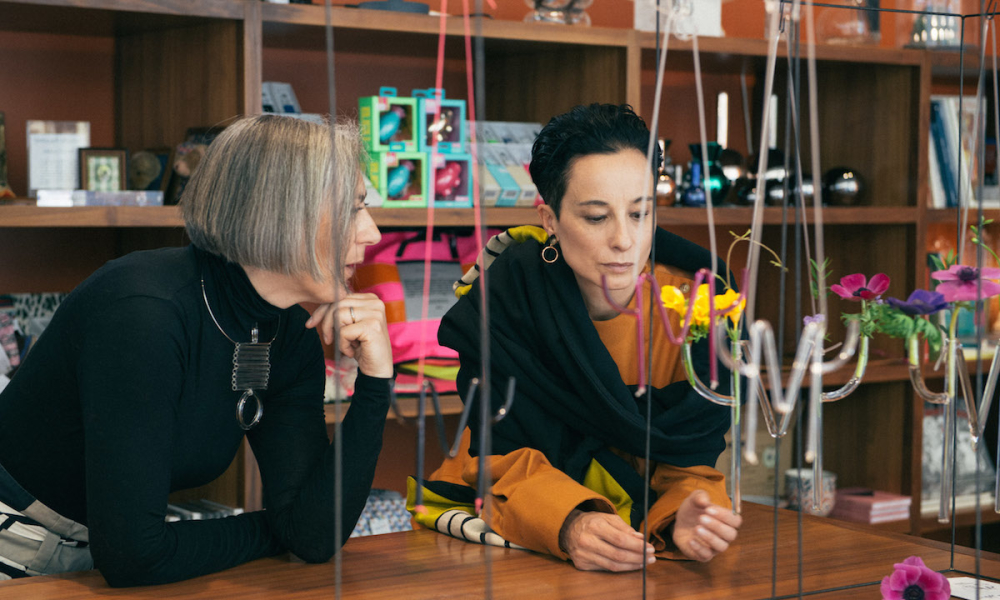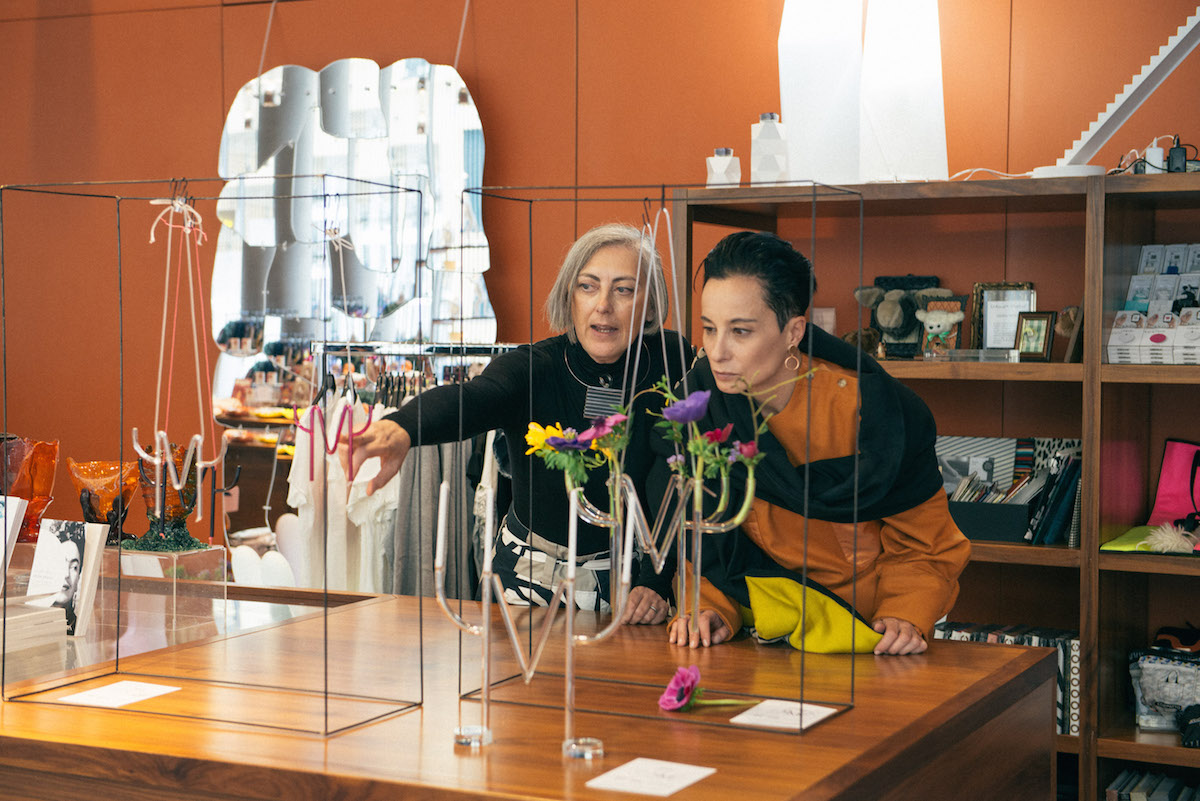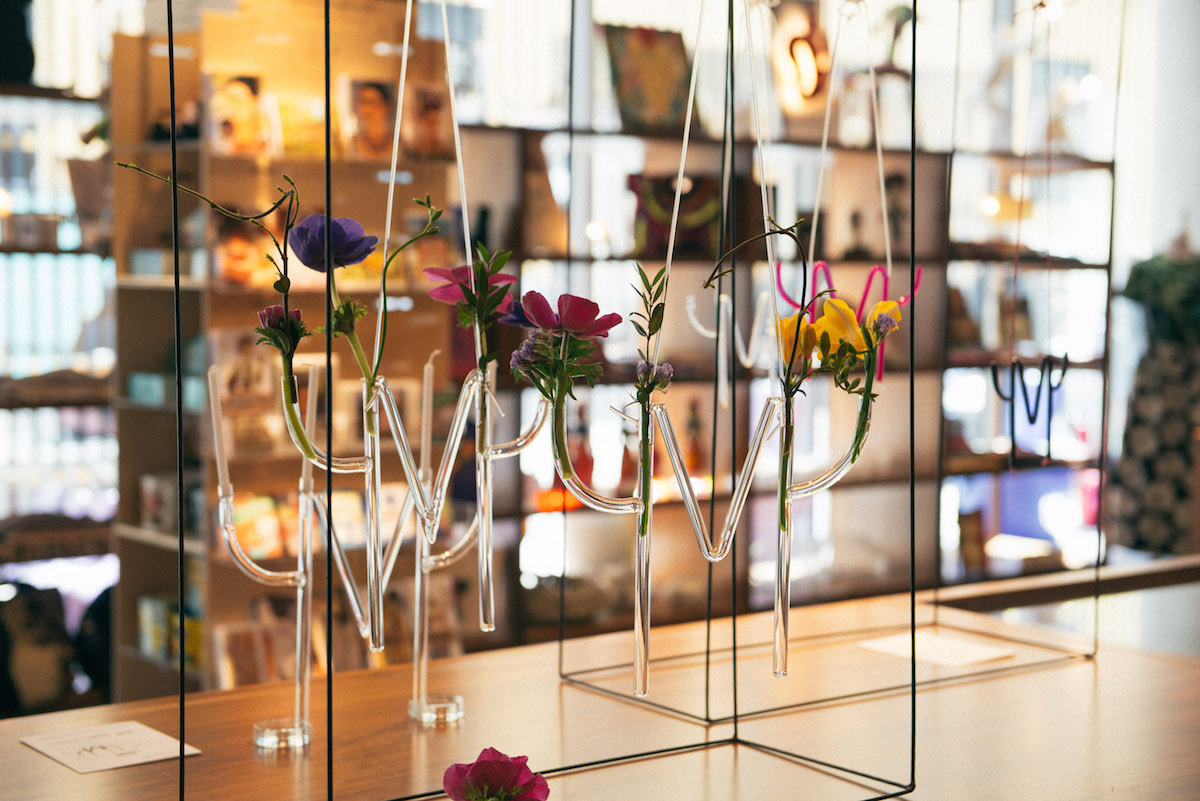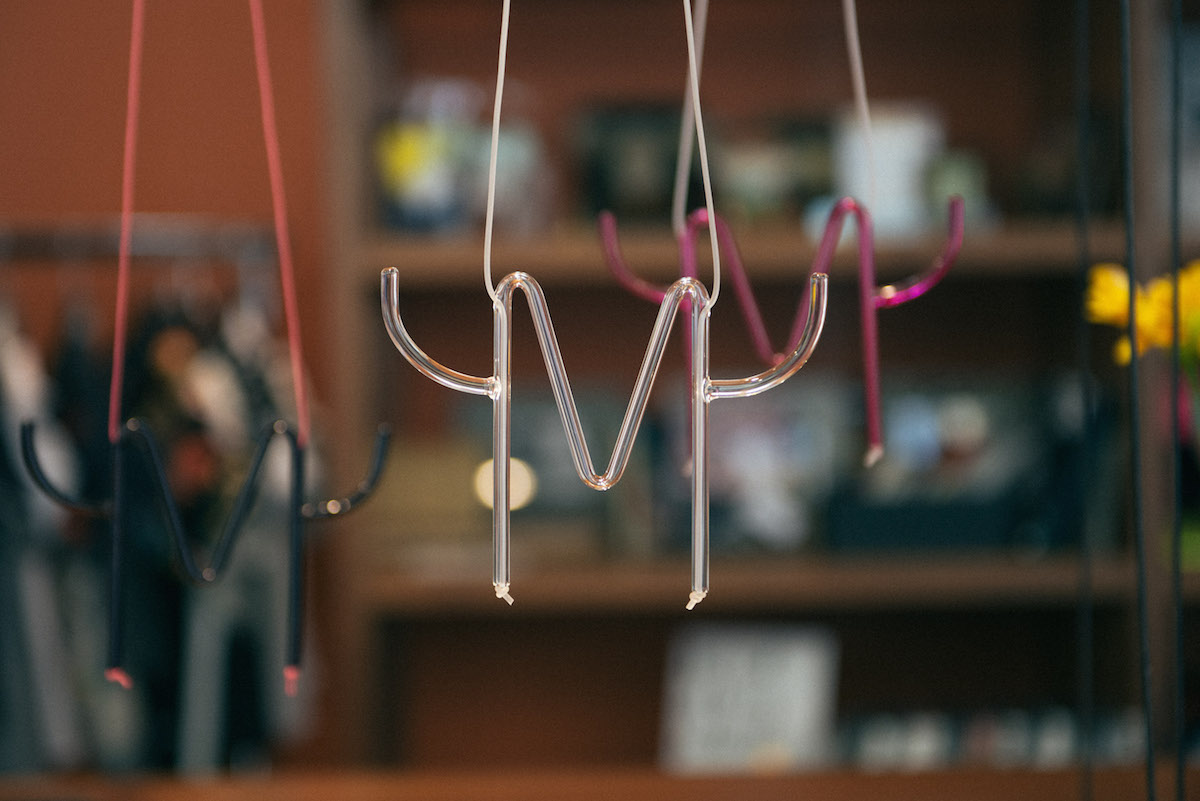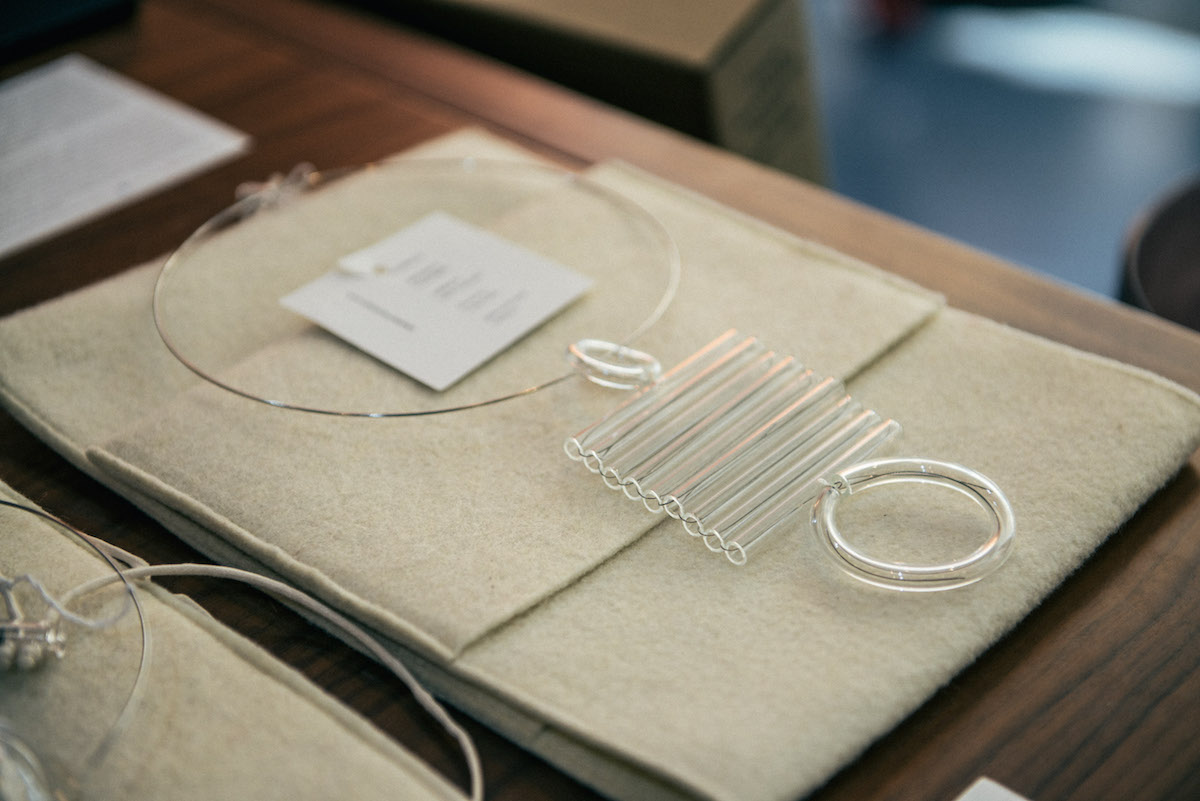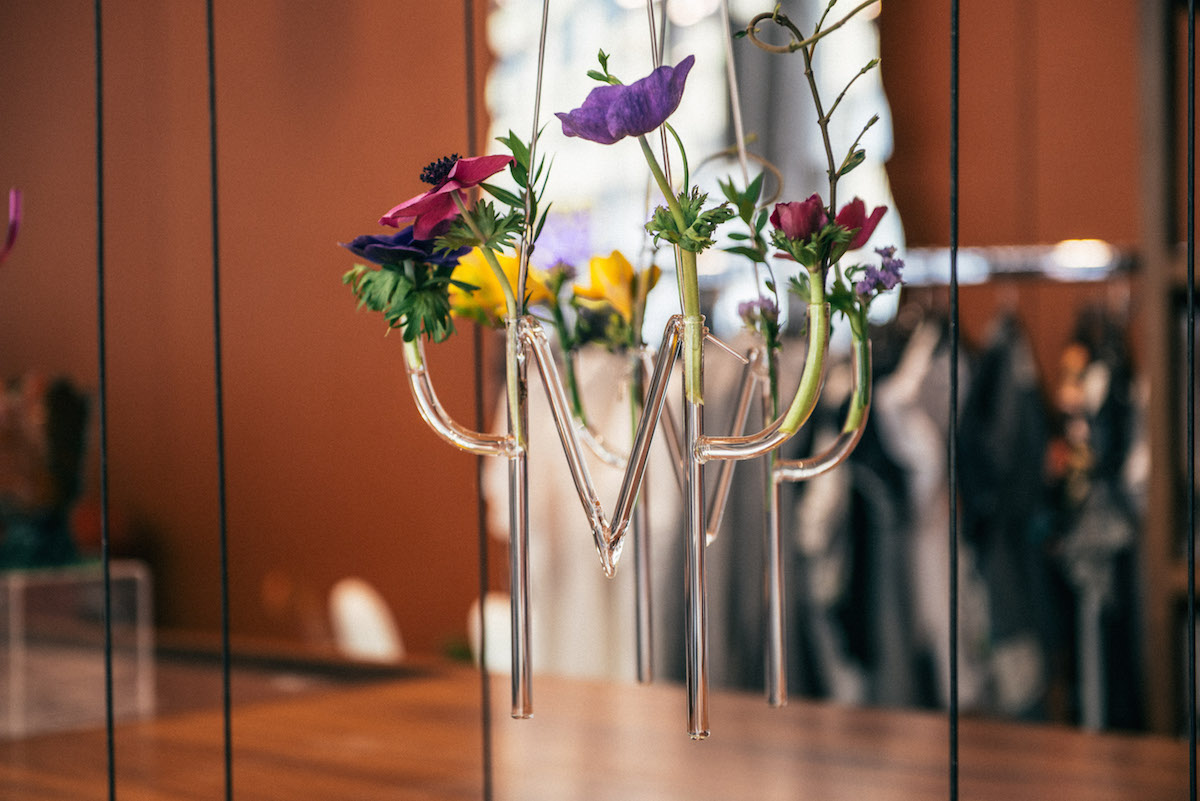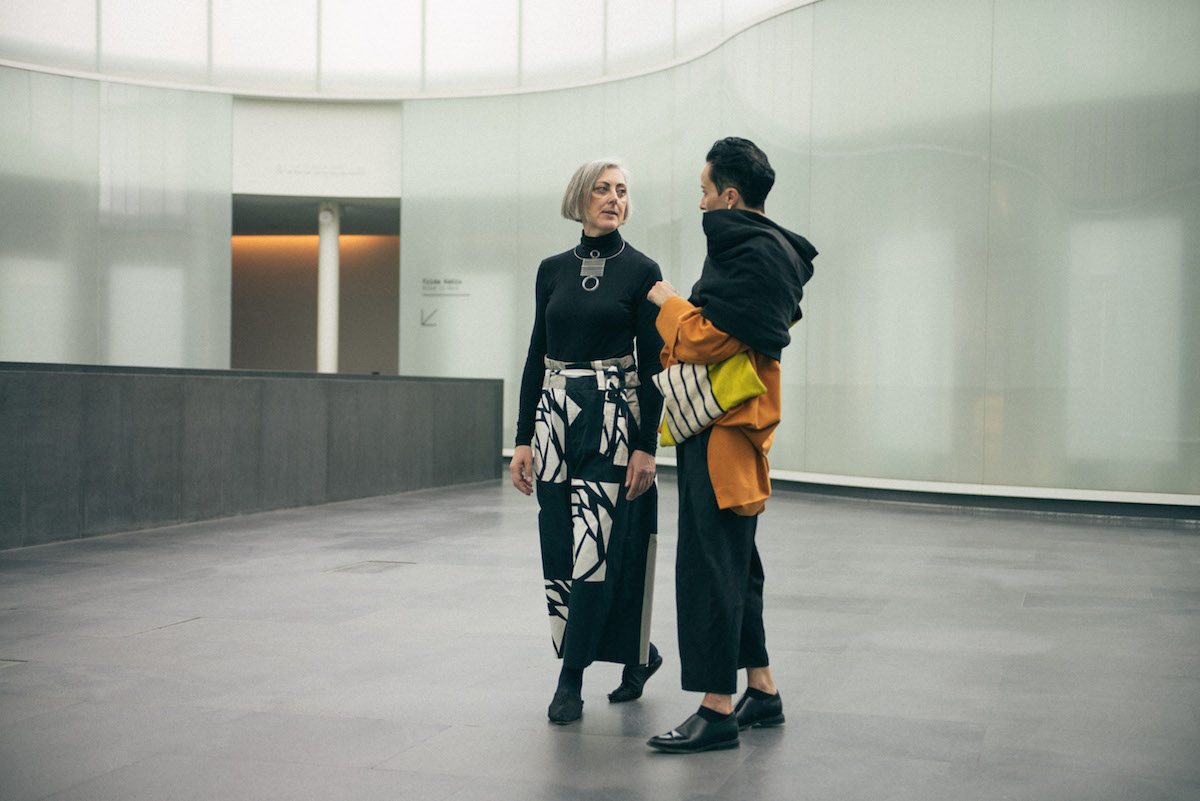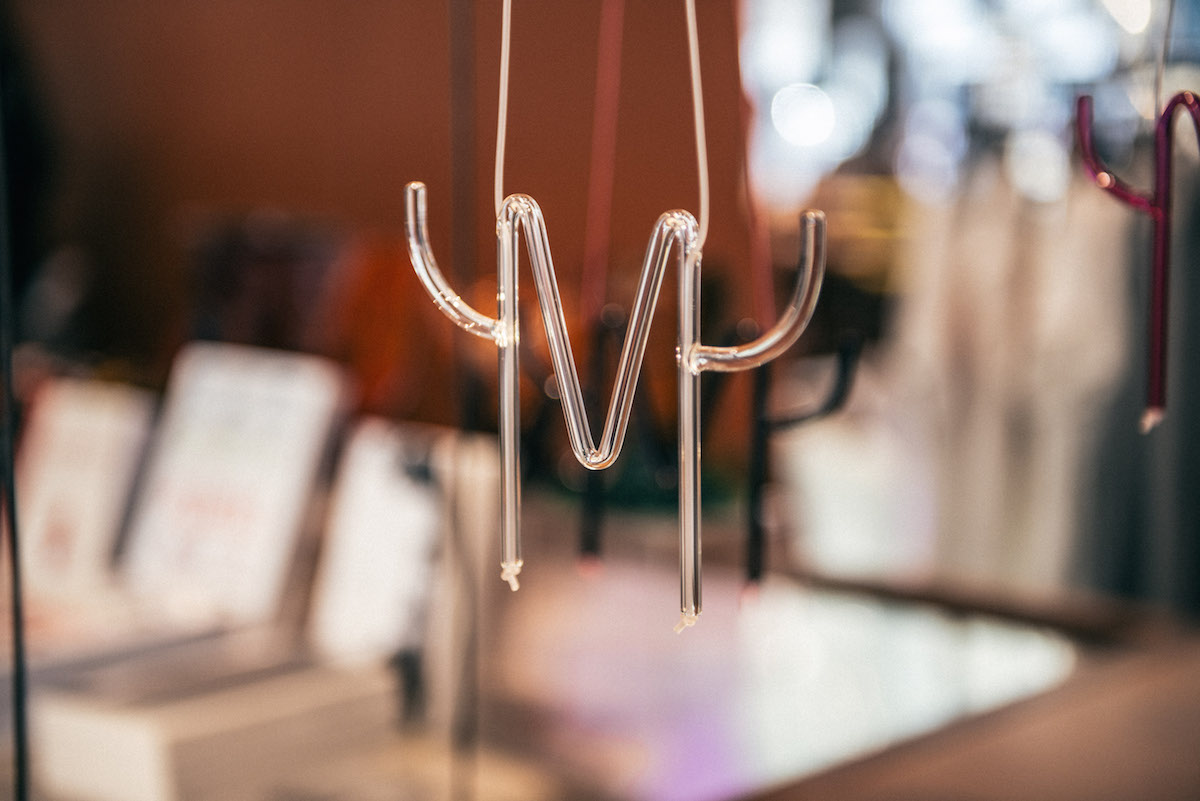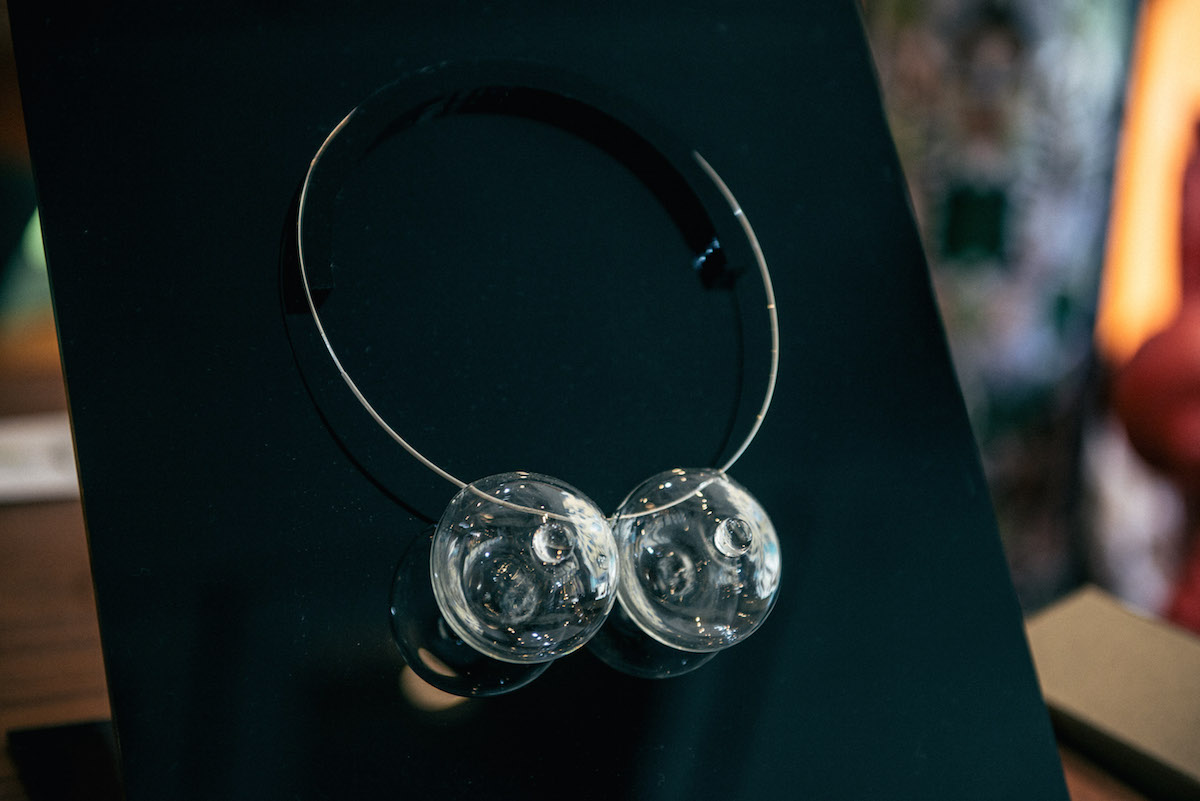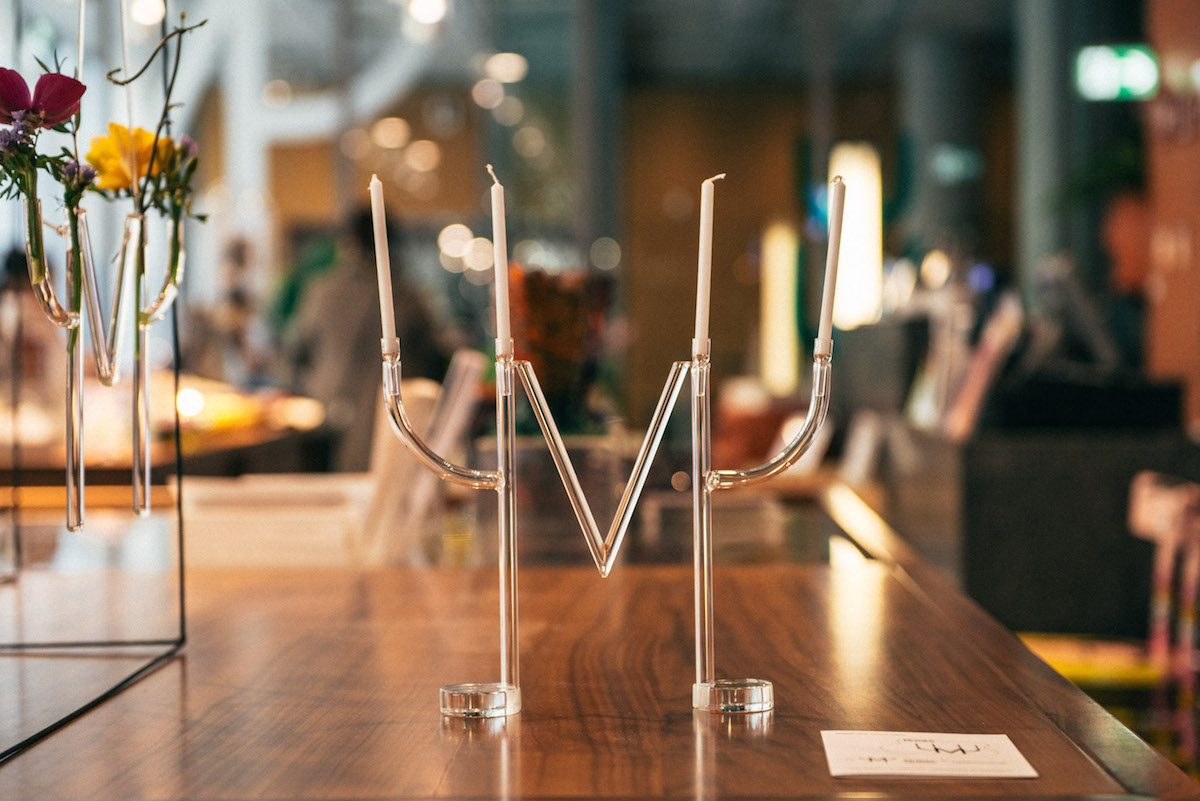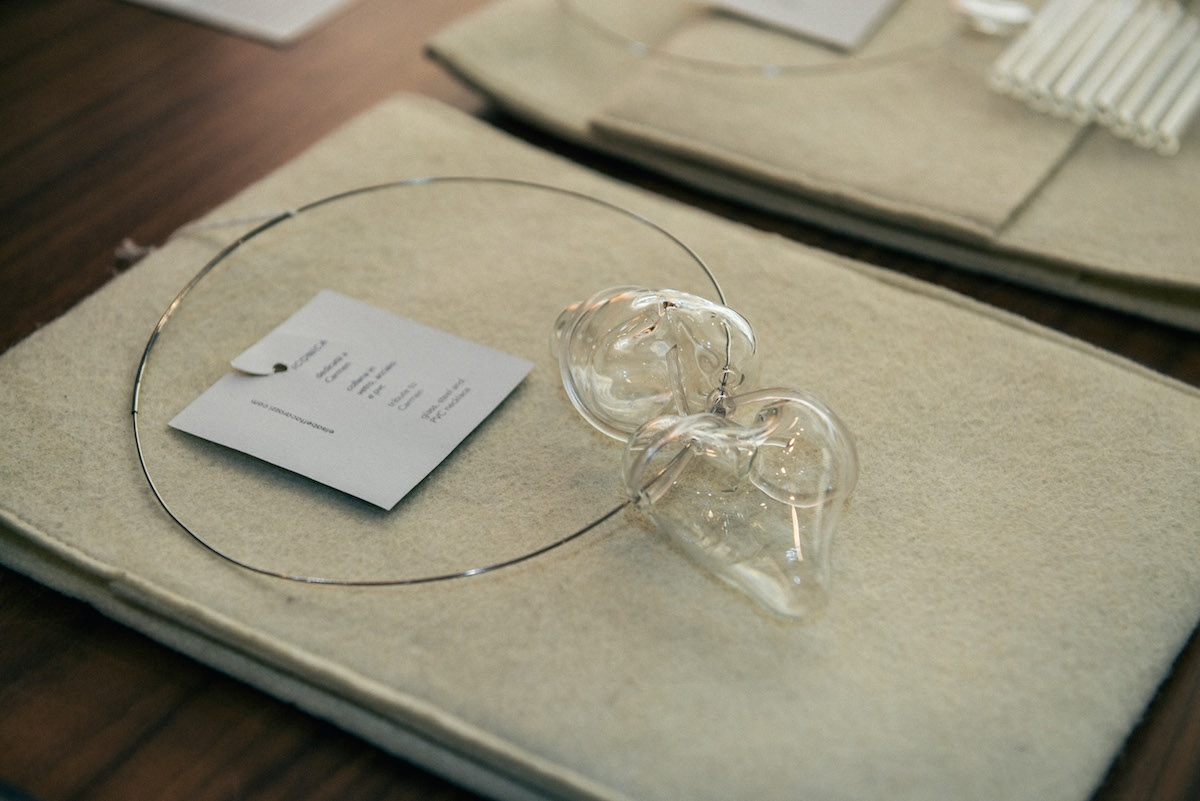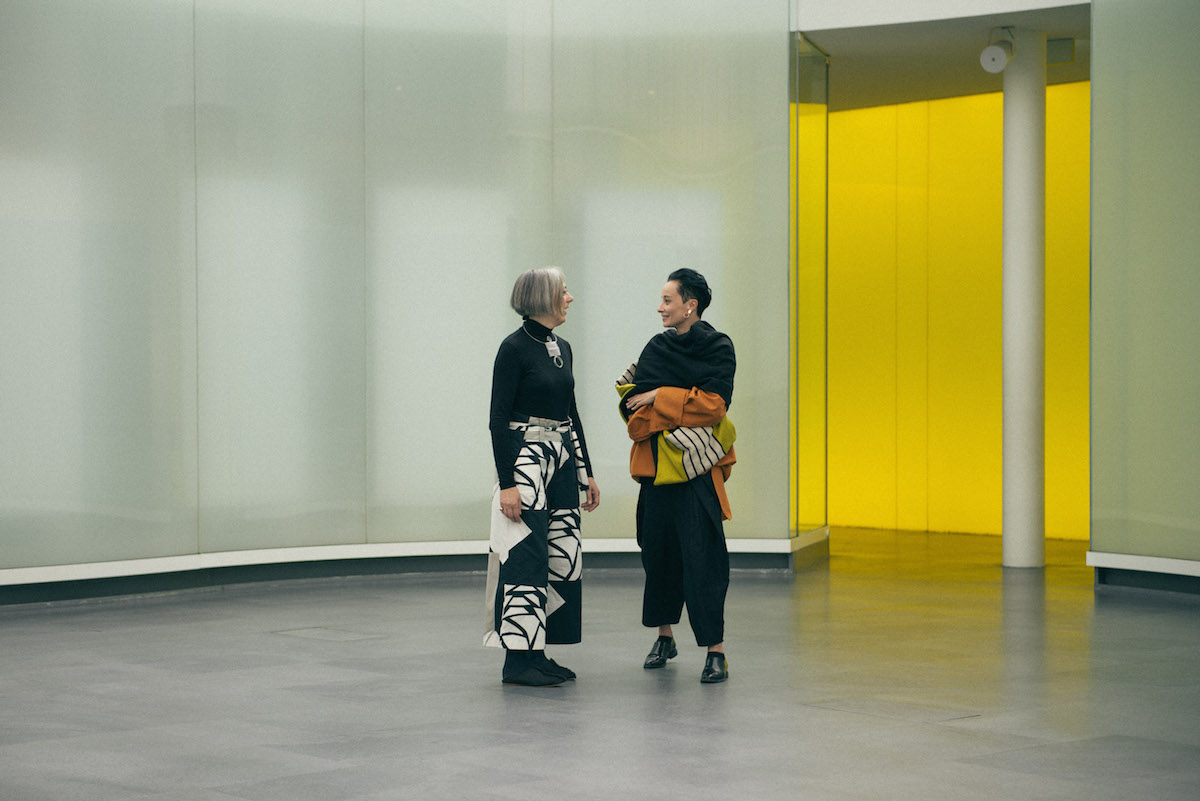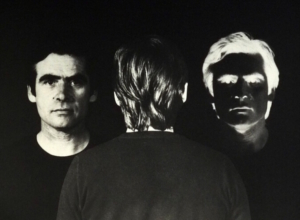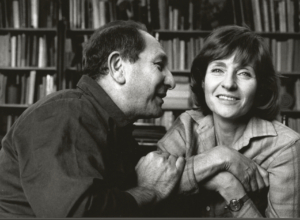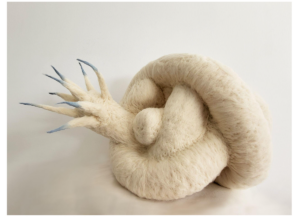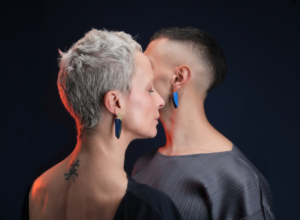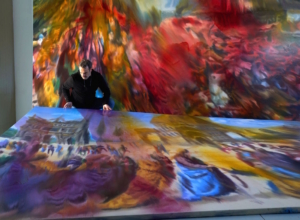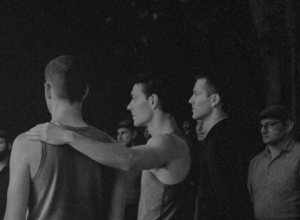Sul piano intersecato da molteplici stimoli creativi e culturali ci addentriamo in uno spazio in cui tutto dialoga, perfino gli oggetti, senza che se ne rendano nemmeno conto. Un luogo in cui tutte le sfumature dell’estro e dell’immaginazione trovano nella bellezza la loro comunanza di intenti, nel contesto museale la condivisione di una stessa visione.
“La collaborazione con il Mudec è continuata in occasione della mostra dedicata a Frida Kahlo poiché avevo realizzato una collana che, ispirandosi a questa figura importantissima di donna, portava il suo nome. Ho deciso allora di proporla al design store dove è attualmente esposta insieme ad altri due modelli: Maja e Carmen. E’ un museo che mi piace molto, soprattutto perché lo ritengo vivo. Un luogo dove io posso andare a trovare bellezza e non si tratta solo della bellezza che si capta con gli occhi, parlo proprio della bellezza della testa e del cuore. Poi ho ragionato sul logo, la forma di questa M, e subito la sensazione di qualcosa di giocoso e vivace. Ho pensato sarebbe stato bello vederlo uscire dalle vetrofanie e trasformarlo in un oggetto di vetro borosilicato. Sulla scorta di queste sensazioni sono nati i tre claim: il Mudec ti fa bella, il Mudec fa primavera, il Mudec fa luce e i relativi oggetti rispettivamente a forma di collana, di portafiori e candeliere.”
Oggetti essenziali e stilizzati dietro i quali si cela un lavoro complesso di sintesi e sottrazione. In più solo il colore: il magenta, il giallo, il verde acqua e turchese, i colori istituzionali che evocano la ricchezza e la gioia dello scambio culturale e della contaminazione.
Nato negli anni ’90 quando il Comune acquistò una zona ex industriale dell’Ansaldo con l’intento di progettare un polo multidisciplinare a vocazione multiculturale, il Mudec – Museo delle Culture di Milano si prefigge oggi, in uno scenario molto più articolato rispetto a quello degli inizi, di instaurare un dialogo attorno ai temi della contemporaneità attraverso le arti visive, performative e sonore, il design e il costume. Un sistema di governance innovativa prevede la gestione in partnership, raggiunta mediante la selezione con procedura di evidenza pubblica, tra Comune di Milano e 24 ORE Cultura – Gruppo 24 ORE e la figura professionale di Chiara Savino, responsabile editoriale e bookshop del Sole 24 Ore Cultura, quale referente per il design store, il punto di vendita e di esposizione di oggetti di design italiani e internazionali all’interno del museo.
“Mi hanno molto colpita gli oggetti di Elisabetta” mi dice Chiara Savino. “Innanzitutto perché li trovo estremamente femminili e poi mi è piaciuta la trasparenza, la leggerezza, hanno un richiamo all’arte minimal giapponese pur essendo italianissimi. Qualche tempo fa abbiamo iniziato ad esporre all’interno dello store alcune sue collane e, come con tanti altri designers, anche con lei abbiamo continuato questo dialogo e scambio reciproci. Il nostro logo, pur non essendo semplice a mio avviso, è stato espresso con il suo linguaggio e la sua sensibilità in maniera molto semplice invece. Una M con dei riccioli che guardano in su e che sono degli esempi di equilibrio e di statica ricorrenti nelle creazioni di Elisabetta. La sua interpretazione è davvero suggestiva.”
A conferma di quanto queste forme di vetro si trovino a loro agio negli luoghi deputati all’arte, anche uno spazio espositivo dedicato a due donne in forma di collana, Maja e Tina Modotti, quest’ultima grande esempio di emancipazione femminile oltre che bravissima fotografa, a Reggio Emilia presso Fondazione Palazzo Magnani in occasione della mostra SEX & REVOLUTION! Immaginario, Utopia, Liberazione (1960-1970) che inaugurerà il 20 aprile 2018.
“Voglio certamente continuare a portare la mia creatività all’interno dei musei perché trovo che questo dialogo vicendevole tra design e arte sia molto efficace. E al tempo stesso desidero continuare la mia ricerca sui materiali e conseguire continue migliorie tecniche grazie alla preziosa collaborazione con gli artigiani il cui lavoro fa davvero la differenza.”
Elisabetta Carozzi – website – Facebook – Instagram
Mudec – Box Special Edition by Elisabetta Carozzi
Foto di Elisabetta Brian
ELISABETTA CAROZZI’S JEWELS FOR MUDEC (English text)
Translation by Rossana Strunce
On an arrangement intersected by numerous creative and cultural stimuli, we enter a space where everything speaks, even the objects, without even apperceiving it. A place where all the nuances of creativity and imagination find in beauty their commonality of intents, in the museum context the sharing of one same vision.
“The cooperation with Mudec continued on the occasion of the exhibit devoted to Frida Kahlo, as I realized a necklace which, inspired by this very important woman, was named after her. I then decided to offer it to the design store where is presently shown together with other two models: Maya and Carmen. It is a museum that I like very much, above all because I consider it alive. A place where I can go and find beauty and I am talking not only about the beauty caught by the eyes, I am talking about the beauty of the mind and of the heart. Then I thought about the logo, the shape of this M, and immediately the sensation of something playful and vivacious came to my mind. I thought that it would have been nice to transform it from a decal into an object of borosilicate glass. Following these sensations, the three claims were created: Mudec makes you beautiful, Mudec is spring, Mudec shines, as well as the relevant objects which were, respectively, in the shape of a necklace, flower vase and candlestick.”
These objects are essential and stylized, behind which there is a complex work of synthesis and subtraction. Furthermore, the colors magenta, yellow, water green and turquoise are the institutional colors that evoke the importance and the joy of the cultural exchange and contamination.
MUDEC – Museum of the Cultures of Milan – is born in the 90s when the Municipality bought a former industrial site (originally owned by Ansaldo), with the purpose to design a multidisciplinary headquarters with multicultural vocations. Mudec nowadays, in a scenario which is much more articulated than before, has the purpose to start a dialogue around the contemporary themes through visual, performing and sound arts, design and costume. A new governance system comprehends the managing in partnership, between the Municipality of Milan and 24 ORE Culture – Group 24 ORE – and the professional figure of Chiara Savino, editorialist in chief and person in charge of the “24 Ore Culture” bookstore, her tasks covering the design store, sales and the exhibit of objects of Italian and International designs inside the Museum.
“I was very impressed by the objects made by Elisabetta” Chiara Savino told me. “First of all because I think they are extremely feminine, and then I liked the transparency, the lightness; they relate to the Japanese minimal art, even if they are very Italian. A while ago we started to show inside the store some of her necklaces and, as with many other designers, also with her we continued this one-to-one dialogue and exchange. Our logo, even if by my opinion it isn’t a simple one, has been expressed with her language and her sensitivity in a very simple way. An ”M” with curls looking up is an example of balance and static that are often found in Elisabetta’s creations. Her interpretation is really impressive.”
To confirm the fact that these glass shapes are at ease in artistic places, there is also a showcase with two necklaces devoted to two women: Maja and Tina Modotti, the latter being a great example of women’s emancipation, besides being a very good photographer, in Reggio Emilia at the Palazzo Magnani Foundation during the exhibit SEX & REVOLUTION! Imagination, Utopia, Freedom (1960-1970) that will open on April 20th, 2018.
“I certainly want to keep on bringing my creativity inside the museums, because I believe that this reciprocal dialogue between design and art is very effective. At the same time, I’d like to go on researching on the materials and improving techniques thanks to the precious collaboration with the artisans, whose work really makes the difference”.


